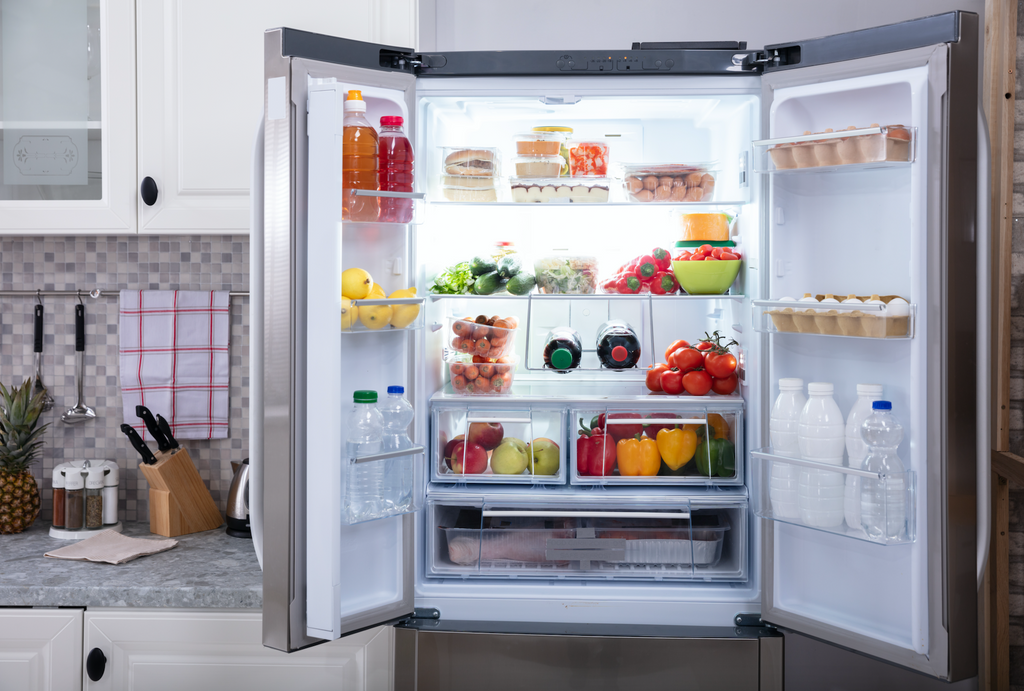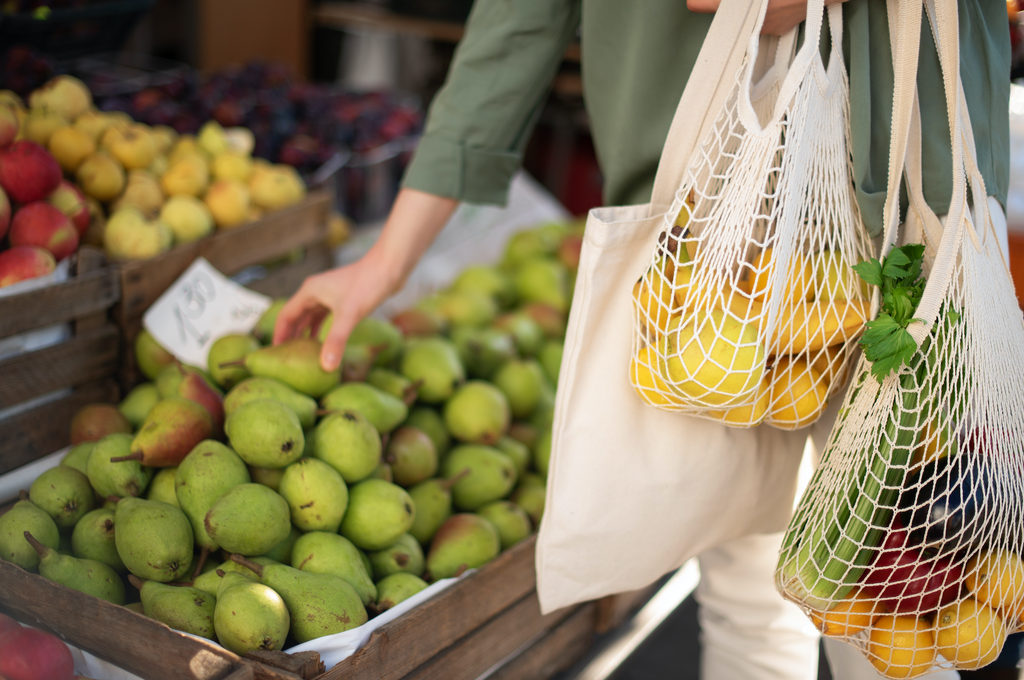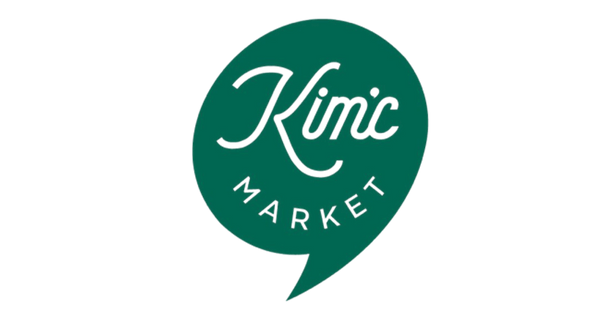Have you ever tossed fresh produce, a cup of yogurt, or a loaf of bread because it was past its sell-by date? Sell-by dates are so ingrained into our everyday lives as Americans that it is hard to imagine a world without them. However, these little dates have likely not been around for as long as you think. They also are not currently regulated in the US and Korea, and indeed in many societies globally. So, why do they have so much power over our relationship with food? Let’s take a deeper look to figure out why.
Labeling Basics
There are various names for types of expiration labels, including sell-by dates, use-by dates, best-before dates, and expiration dates, to name a few. While the differences between these terms might seem arbitrary, they do mean different things. Sell-by dates are indicators of freshness. They are often used on dry goods like pasta, beans, or similar shelf-stable foods. The dates on these products act more as suggestions for peak freshness to ensure that you are eating the food at its best quality. That said, these foods can often be consumed safely beyond their printed dates, and sometimes can last indefinitely.
Use-by dates and expiration dates are a bit more firm in comparison. These dates are typically used on perishable items like meat, dairy products, eggs, or bread. These items can be spoiled by bacterial growth if left too long in your refrigerator or cabinet, and should not be eaten beyond the recommended date. In this case, food safety plays a role in the determination of these labels, which is why they are more inflexible than sell-by dates. The shelf life of these foods can be lengthened by proper storage, particularly in the freezer.
Origin of Sell-By Dates

Sell-by dates were first used in America in the years following the Second World War. During this period, Americans were beginning to shop at larger grocery stores. Supermarkets began to emerge, and they stocked more mass-produced items. These products were stamped with codes to indicate when the grocer needed to rotate their stock. Eventually, the public caught on to this, and since they showed interest in the freshness of the food they were purchasing, manufacturers began to print more clear dates indicating the peak freshness of their products.
Thus, sell-by dates were born. They were never regulated in the USA, although at various points in history, lawmakers have tried to create legislation regulating product labels. They never succeeded, except in the case of infant formula, which does have regulated dates. In place of a centralized system for determining these dates, manufacturers have taken it upon themselves to decide when a product is past its peak freshness. Some manufacturers do consult food scientists or use focus groups to figure out the peak quality of their products. However, since there is no standard practice, they are allowed to place whatever date they believe is correct, often leading to inaccuracies and misunderstandings among consumers.
Food Waste in America
Food waste is one of the biggest problems contributing to climate change in our modern world. According to Vox, “forty percent of food produced in America” is wasted. This is an extremely large portion of our food supply, meaning that if we work harder to eliminate food waste, we can improve carbon emissions and decrease the amount of food going into landfills each year. As climate change becomes a more pressing issue, the need to fix major sources of food waste becomes more pressing as well.
Various factors can cause food waste, including farmers being unable to sell their produce due to overproduction, individuals letting food rot in their fridges, or grocery stores throwing away food past its “sell-by” date. The latter is a huge contributor to this issue, and according to the FDA, it could be causing around 20 percent of our country’s overall food waste each year. This becomes even more of an issue when compounded by the fact that food labeling is not standardized in any way, meaning that much of the food that gets thrown away is still edible. Educating the public on food labels and their possible inaccuracies could help to end this cycle.
Food Waste and Labeling in Korea
In Korea, food labels are also currently unregulated, although the Korean government is planning on instituting regulations beginning in January of 2023. The government is offering a 6 month grace period to allow manufacturers to make the switch with ease. Manufacturers typically use one of a few labels on Korean packaged food: date of manufacture “제조,” an expiration date “유통기한,” or a use by date “사용기한.” These labels are similar to those used in the United States in that they are not standardized in any way, although the planned regulations set to begin in 2023 will likely change this.
Because there are multiple labels used on food products, there is confusion surrounding these labels. The Korea Herald claims that miscommunication and misunderstandings of the labeling system cause around 1.54 trillion won (or around 1.5 billion dollars) worth of food to be wasted annually in Korea. Money is not the only resource being wasted though, as food production and waste disposal processes both cause a large number of carbon emissions. According to the Korea Times, 14,314 tons of food were wasted each day in Korea in 2019. Proper labeling could prevent future waste, or at least reduce the amount of food wasted.
Shortened Shelf Life
Because manufacturers choose their expiration dates, they have the opportunity to control exactly how long they want the item to remain on the shelf. While this is sometimes related to safety, it is mostly arbitrary. In America, manufacturers will shorten dates on occasion to ensure that you enjoy their product at its peak freshness. It is important to note that freshness does not correspond with food safety, and often a product that isn’t considered “fresh” can still be eaten. Additionally, manufacturers often subtract some time from the full shelf life to account for differences in storage, as fridge temperatures and counter cleanliness can affect the freshness of foods.
In Korea, manufacturers often set sell-by dates around 60 to 70 percent of the food’s actual shelf life to ensure the customer gets the freshest product. While this is well-intentioned, it can lead to the wasting of perfectly edible products, which makes the food waste problem in Korea even worse. Even use-by dates are shortened, although slightly less so at around 80 or 90 percent of the product’s true shelf life. This contributes to the endless cycle of wasting perfectly good food that could feed someone in need rather than going to the landfill.
Storage as a Solution

Proper storage can help lengthen the shelf life of many foods. One of the simplest ways to extend a food’s shelf life is by freezing it. Frozen food can last indefinitely without any fear of bacterial growth, although the quality of foods can be compromised if kept frozen for too long. This is purely a matter of personal taste, however, and does not mean that the food is unsafe to eat.
Canned goods can also be kept indefinitely with little worry of bacterial contamination. If you are eating canned food past its expiration date, be sure to inspect the can for any signs of bloating, rusting, or imperfection. If the can is damaged, it is not safe to eat, however, that is fairly rare. It is easy to tell when canned food has spoiled, as it will be moldy or cloudy in appearance, and will typically have an odor. When canned in metal, these foods last the longest, followed by those canned in glass. Foods canned in plastic have the shortest shelf life of all canned goods.
White rice, flour, and other grains can also last indefinitely. Sugar, honey, and molasses can similarly be kept indefinitely. They may lose freshness over time, however, this is not the same thing as spoiling, and does not compromise the safety of eating the food. Proper storage can greatly affect shelf life. Grains and sweeteners can be kept longest when stored in an airtight container in the refrigerator but will also last a long time at room temperature.
Brown rice is different, however, because of its fat content. When the rice bran is left on, slightly more fat remains on the rice. Fat is the quickest type of food to spoil at room temperature, so brown rice should be kept for a maximum of six months. Storing it in the refrigerator can extend this period of storage, and using an airtight container is best to maintain the quality and nutritional value of the rice.
Most spices, dried herbs, and teas can also last indefinitely, even when stored at room temperature. They will lose flavor over time, but they are safe to eat. Their shelf life can be extended by storing them in the refrigerator.
Fermented Goods
If you are a fan of Korean food, you’re likely already familiar with eating fermented food like kimchi, gochujang, or doenjang. These delicious aged products use the process of fermentation as a preservation tool, but also as a means to add deep flavor to various dishes.
Fermentation uses bacteria and yeast to produce cultures in foods like cheese, yogurt, and kimchi. Good bacteria flourish in the anaerobic fermentation environment, while bad bacteria are unable to survive. Fermented goods stay safe to eat for much longer than their non-fermented counterparts, and it is really up to personal taste to decide if fermented food is “still good”, so long as it has been stored properly.
It is completely normal for molds or fungi to grow on top of products like gochujang and doenjang. This does not mean that they are inedible. Maangchi, also known as Emily Kim, is a Korean-American chef with a popular YouTube channel that teaches viewers how to cook authentic Korean food. On her blog, she states that fungal growth on gochujang is to be expected, and recommends removing the affected area, adding more salt, stirring it in, and leaving the open container in the sunlight whenever possible. A similar process can be used when cheese is molding, and is a perfect way to prevent wasting an entire product for one imperfection.
Use Your Intuition
When determining if a food is still okay to eat, food scientist Elizabeth Anderson says to use your senses. She says it is important to check for changes in the food, especially concerning the texture, color, and taste of the item. If the food looks and tastes normal, it is typically safe to eat. This process should be used with discretion, however, with foods that can be dangerous to consume after spoilage, like meat or fish.
To avoid food waste, we encourage customers to rely on their senses when determining whether certain foods are safe to eat by deciding whether to discard the product based on how it looks and smells.
The same process applies when consuming fermented foods, which should last indefinitely under proper storage conditions. If it smells fresh and normal, which is a different threshold for each person, it is typically safe to eat. Over time, the fermentation process will give the food a strong, funky flavor. It is up to the consumer to decide how much of this funkiness they are able or willing to consume.
Solutions for a Better Future

There are many ways to decrease food waste, which we are just beginning to understand is a massive contributor to climate change. Some solutions are easy to address at home, such as planning meals around ingredients that are already in your fridge or actually eating those leftovers that have been shoved to the back of the shelf. Others, which require structural changes, might take a bit longer to solve. One such problem is overproduction, but farmers cannot truly tell how much food they will be able to sell at the end of the season, so there is often a surplus at harvest time.
One of our best weapons in the fight against food waste is being willing to buy and eat foods that are close to or past their sell-by, best-by, or use-by dates. Just because an item isn’t the newest on the shelf doesn’t mean it is lower quality than more recently produced items. Often, grocery stores will sell foods that are close to their best-by dates at a discounted price, and these items are certainly worth considering when shopping for food. It is important to find long-term solutions that will keep our planet habitable for generations to come, and addressing food waste is a simple way to do your part in the fight against climate change.
Keywords: Food blog, best-by dates, sell-by dates, food, food waste


